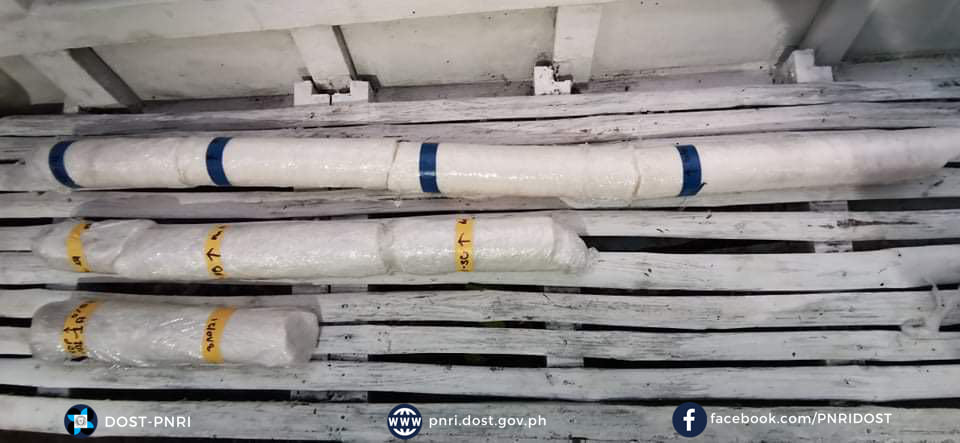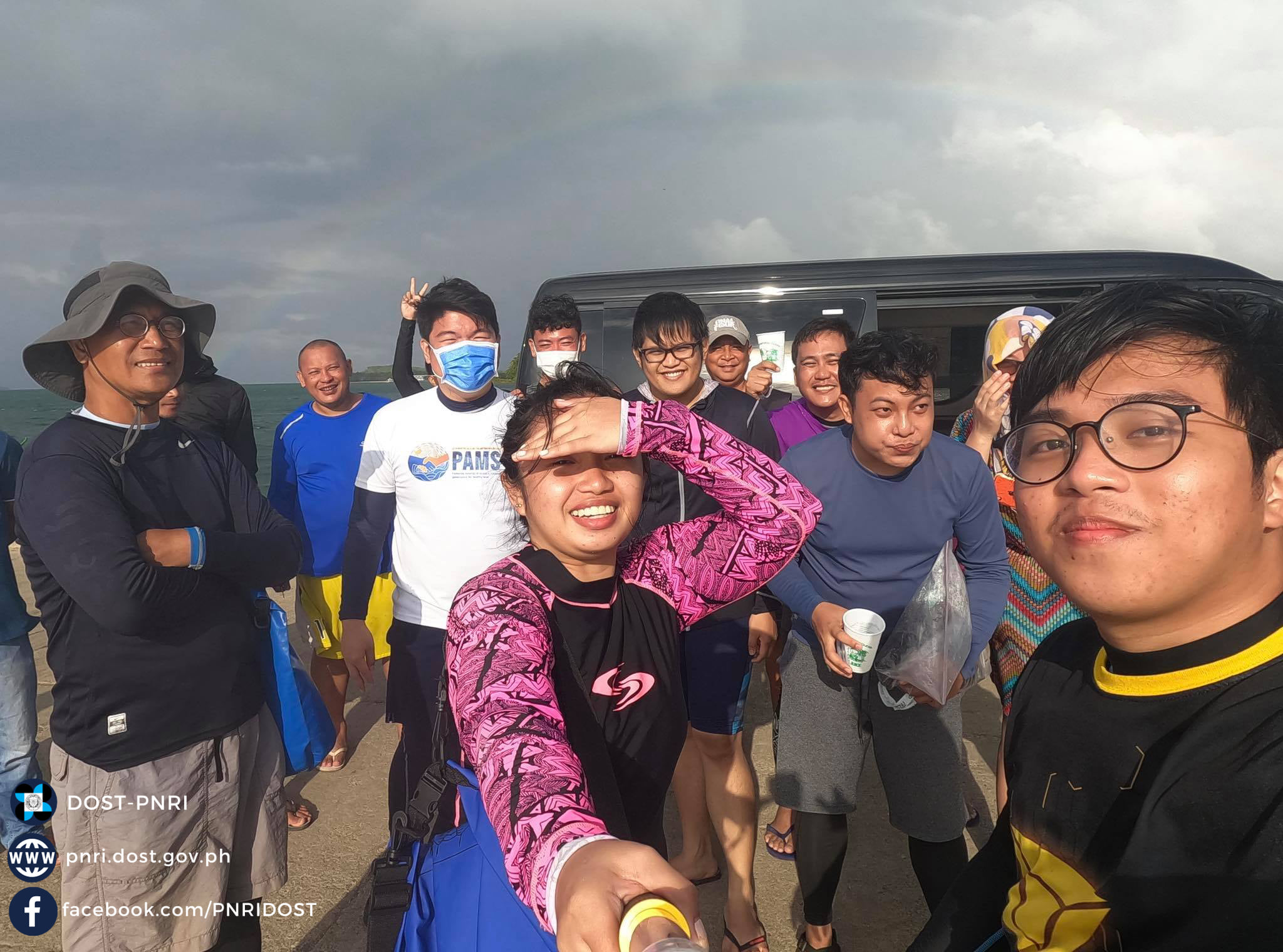
Coral core sampling by Dr. Fernando Siringan of UP-MSI (left) and Dr. Angel Bautista VII of DOST-PNRI (right)
Detecting radiation among corals
On March 11, 2011, exactly 10 years ago from today, a massive earthquake followed by a tsunami hit the eastern coast of Japan. This led to the Fukushima Nuclear Power Plant accident.
This week, in the sea waters of Palaui Island, Sta. Ana, Cagayan, Dr. Angel Bautista VII and Dr. Fernando Siringan of the Department of Science and Technology - Philippine Nuclear Research Institute (DOST-PNRI) and UP-Marine Science Institute (UP-MSI), respectively, check out meter-long coral cores for information on human nuclear activities.
Earlier, the project team was able to detect radionuclide contaminants among corals in Baler, Aurora and Vinzons, Camarines Norte by measuring the radionuclide iodine-129.
The presence of radiation among the corals in said locations suggest that radionuclide contaminants from the Fukushima nuclear accident might have already reached the Philippines. The radiation detected is low and is far from being a health concern.
However, confirmation about the arrival of radioactive contamination from the Fukushima Accident site to the Philippine coasts give us vital information that can help us prepare in the event of similar incidents in the future.
This project is funded by the DOST- Philippine Council for Agriculture, Aquatic and Natural Resources Research and Development (DOST-PCAARRD).

Collected coral cores from Palaui Island, Sta. Ana, Cagayan

All smiles from the Fukushima Project Team after the successful fieldwork and sampling












































